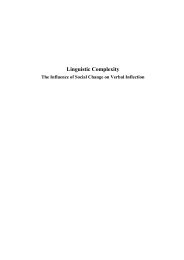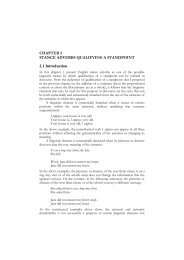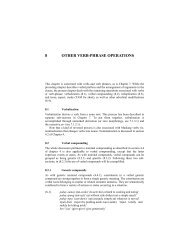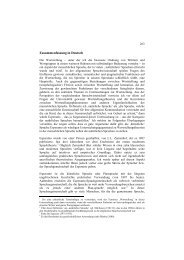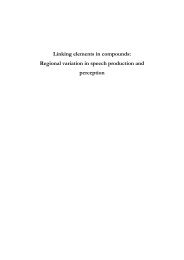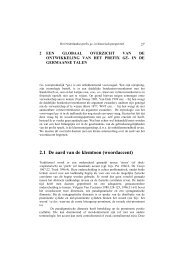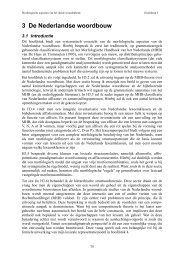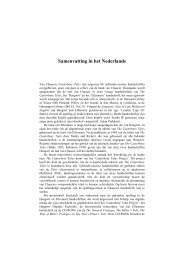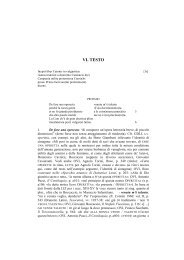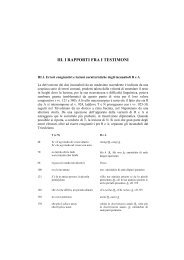Chapter 9 - LOT publications
Chapter 9 - LOT publications
Chapter 9 - LOT publications
Create successful ePaper yourself
Turn your PDF publications into a flip-book with our unique Google optimized e-Paper software.
Accounts of SLI in Afrikaans<br />
(178)<br />
ek kan maar dit afhaal?<br />
I can just it off-take<br />
‘It’s OK for me to take this off?’<br />
(179) Target:<br />
*waar die yskas dan?<br />
waar is die yskas dan?<br />
where the fridge then<br />
where be the fridge then<br />
‘Where is the fridge then?’<br />
(180)<br />
kan ek nie dit ander mense nie?<br />
can I not this/it other people not?<br />
Regarding the prediction in terms of the RDDR that Afrikaans-speaking<br />
children with SLI have difficulties understanding and producing passive<br />
constructions, this is difficult to assess, seeing that passives occurred at a<br />
very low rate in the language of all three groups of children, even in that<br />
of the typically developing 6-year-olds. In total, only one “full” passive<br />
construction was found in the first 30 minutes of the 45 language<br />
samples (22.5 hours in total).<br />
As stated above, a third consequence of the RDDR would be that<br />
Afrikaans-speaking children with SLI experience problems in<br />
interpreting and producing constructions in which co-referential<br />
relationships occur. As was the case for passive constructions, these<br />
constructions were not tested by the experimental tasks, so evidence<br />
needs to be sought in the language samples. Like passive constructions,<br />
constructions in which co-referential relationships occur were not<br />
produced frequently – eight times in total in the first 30 minutes of the<br />
language samples: twice by typically developing 6-year-olds; twice by 4-<br />
year-olds; and four times by children with SLI (in total, seven children<br />
produced a construction in which co-referential relationships occurred).<br />
Of these eight constructions, not one contained a –self form (as in Hy<br />
trek homself aan ‘He dresses himself’); all eight were mekaar ‘each other /<br />
one another’ forms as in (181), produced by a typically developing 6-<br />
year-old girl. One of these, produced by a boy with SLI and given in<br />
(182), was ungrammatical.<br />
264



